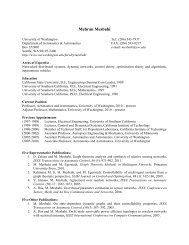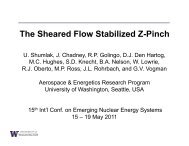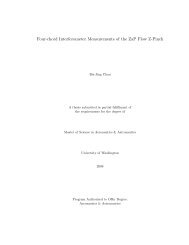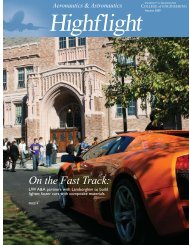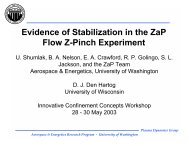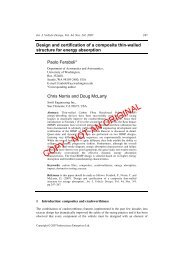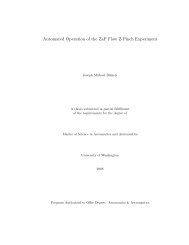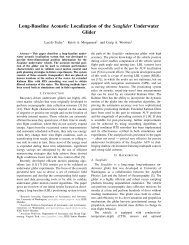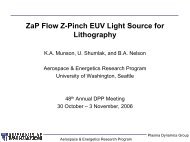Distributed Reactive Collision Avoidance - University of Washington
Distributed Reactive Collision Avoidance - University of Washington
Distributed Reactive Collision Avoidance - University of Washington
You also want an ePaper? Increase the reach of your titles
YUMPU automatically turns print PDFs into web optimized ePapers that Google loves.
24<br />
given certain bounds on the separation. The separation bounds are necessary because a<br />
wide class <strong>of</strong> initial conditions exist for which collision avoidance is impossible, usually<br />
due to a lack <strong>of</strong> sufficient control authority.<br />
While the deconfliction maintenance phase can operate with arbitrarily small control<br />
authority, the deconfliction maneuver requires control authority to get out <strong>of</strong> conflict before<br />
a collision occurs. Therefore it is important when designing a maneuver that the vehicle<br />
will have sufficient control authority to complete it. The problem with using speed changes<br />
in the maneuver is that all vehicles have a maximum speed, so their control authority to<br />
accelerate forward goes to zero as this maximum speed is approached.<br />
Therefore, turning as a means <strong>of</strong> deconfliction is applicable to a wider range <strong>of</strong> vehicles,<br />
since there is almost never a maximum heading angle. In addition, most vehicles have<br />
more acceleration available in turning than in speeding up or slowing down, since the latter<br />
requires work and former does not. Vertical acceleration can be as easy as turning for a<br />
buoyant vehicle, or require a significant change in potential energy for a vehicle such as<br />
an airplane. Therefore it may be prudent to restrict some vehicles to a 2D deconfliction<br />
maneuver in order to ensure they are capable <strong>of</strong> completing it.<br />
Two deconfliction maneuvers will be presented here, first a constant-speed maneuver<br />
that nearly any vehicle is capable <strong>of</strong>, and second a variable speed maneuver that has better<br />
performance at the cost <strong>of</strong> computational complexity. Both <strong>of</strong> these maneuvers are 2D, but<br />
deconfliction maintenance works for 3D as well. In order to use these maneuvers in a 3D<br />
application one would have to project the vehicle’s positions and velocities onto the plane,<br />
perform the maneuver, then add back in the original vertical component to the resulting<br />
velocity. The guarantees <strong>of</strong> attaining conflict-freedom will still apply (though the solutions<br />
will be more conservative) and once deconfliction maintenance takes over, the 3D nature <strong>of</strong><br />
the system will be accounted for in a less conservative way.



